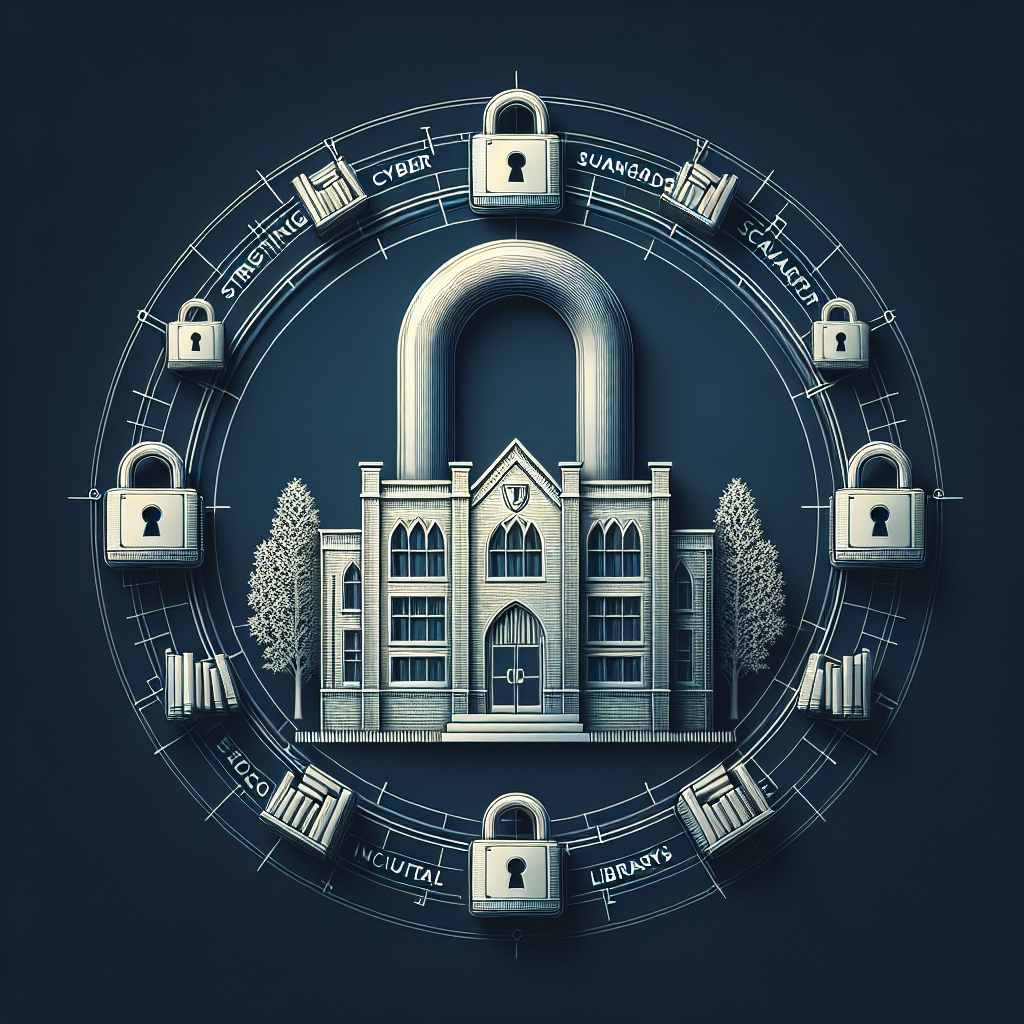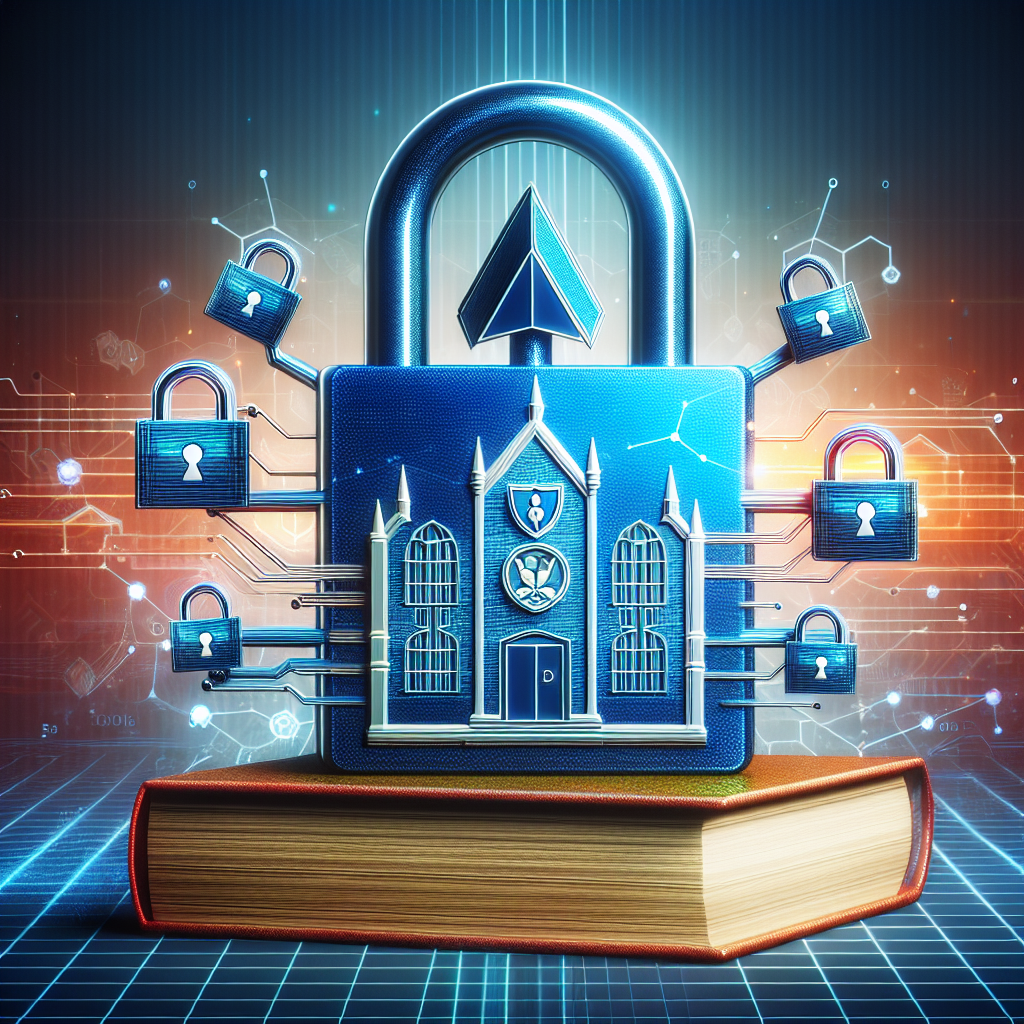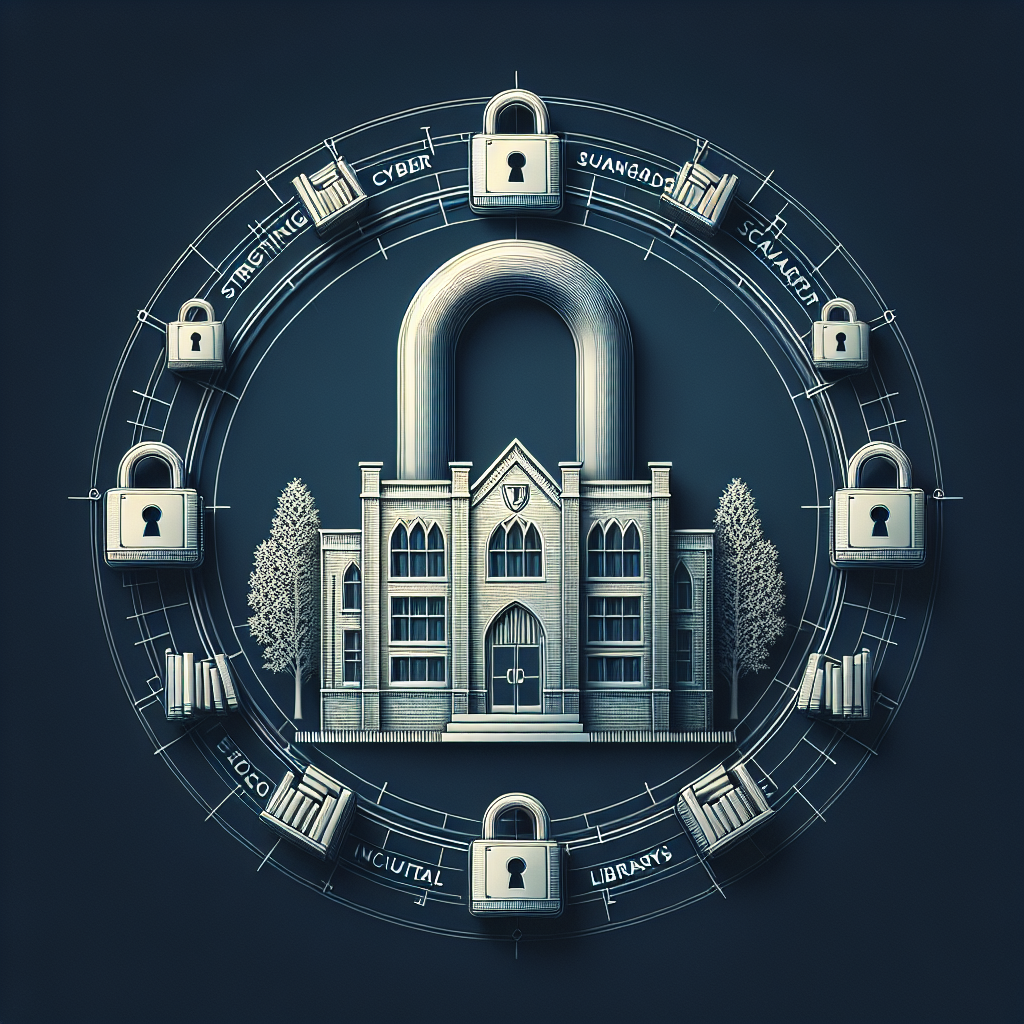Faced with the increasing number of cyberattacks on schools and libraries across the country, the Federal Communications Commission (FCC) has announced a three-year pilot program aimed at improving cyber protections for these institutions. The program’s goal is to gather data on the best cyberdefenses and develop strategies to ensure the security of sensitive information within these organizations. By implementing stronger cybersecurity measures, the FCC hopes to mitigate the risk of cyberattacks and protect the educational and informational resources that schools and libraries provide to the public.

FCC’s Three-Year Pilot Program
The Federal Communications Commission (FCC) announced a three-year pilot program aimed at increasing cyber protections for schools and libraries. This initiative recognizes the growing number of cyberattacks targeting educational institutions and aims to gather data on the best cyberdefense strategies. By implementing effective cybersecurity measures, the FCC hopes to protect the sensitive information of students and staff members, while also safeguarding the learning and education process. Through this program, the FCC seeks to address the challenges faced by schools and libraries in defending against cyber threats.
Goals of the Program
The primary goal of the FCC’s three-year pilot program is to enhance cyber protections for schools and libraries. By collecting comprehensive data on cyberattacks and analyzing the effectiveness of various defense strategies, the FCC aims to identify the most efficient and practical ways to safeguard educational institutions from digital threats. The program also aims to raise awareness about the importance of cybersecurity in these settings and encourage proactive measures to mitigate the risks associated with cyberattacks.
Data Gathering Process
To achieve its objectives, the FCC’s pilot program will involve extensive data gathering on cyberattacks targeting schools and libraries. Through partnerships with educational institutions, the FCC will collect information on the types of attacks, the methods employed by cybercriminals, and the impacts suffered by the institutions. This data will serve as valuable insights to develop tailored cybersecurity solutions and inform policymakers about the nature and severity of the threats faced by these institutions.
Cyberdefense Strategies
One of the key outcomes of the three-year pilot program will be the identification and sharing of effective cyberdefense strategies. The FCC will work closely with schools and libraries to understand their specific needs and challenges when it comes to cybersecurity. By collaborating with experts in the field, the FCC aims to develop comprehensive and practical guidelines for educational institutions to enhance their cyber defenses. These strategies will cover areas such as network security, data protection, incident response, and staff training, among others.
Increasing Cyber Protections for Schools and Libraries
Educational institutions, including schools and libraries, are facing a growing number of cyberattacks. These attacks pose significant risks to both the sensitive information of students and staff members, as well as the continuity of learning and education. In light of this escalating threat landscape, it is crucial to prioritize and strengthen cyber protections in these settings.
Growing Number of Cyberattacks
Over the past few years, the frequency and sophistication of cyberattacks targeting educational institutions have increased substantially. Hackers view schools and libraries as attractive targets due to the wealth of personal and financial data they possess. These attacks range from ransomware attacks, where cybercriminals encrypt sensitive data and demand a ransom for its release, to social engineering-based attacks, where hackers manipulate individuals to gain unauthorized access to systems and information. The prevalence of these attacks underscores the urgent need for robust cyber defenses in schools and libraries.
Importance of Cyber Protections
Cybersecurity in schools and libraries is crucial for several reasons. Firstly, these institutions handle vast amounts of sensitive personal data, including student records, financial information, and medical records. The loss or compromise of this data can have serious consequences for both individuals and institutions. Secondly, cyberattacks can disrupt the learning and education process, impacting students and teachers alike. Disruptions in online learning platforms, data breaches, and system downtime can lead to significant disruptions in the delivery of education. Lastly, cyber attacks can have severe financial and reputational consequences for schools and libraries. The costs associated with data breaches, remediation efforts, and legal repercussions can strain the already limited resources of these institutions and damage their reputation.
Challenges Faced by Schools and Libraries
Educational institutions face several challenges when it comes to cybersecurity. Limited budgets and resources often restrict their ability to implement and maintain robust defenses. Additionally, a lack of cybersecurity awareness and expertise among staff members can hinder efforts to effectively respond to cyber threats. Educational institutions also need to strike a balance between maintaining a secure environment and providing accessible and user-friendly systems for students and teachers. Addressing these challenges requires collaboration between schools, libraries, and government agencies to provide the necessary resources, training, and support.

Understanding the Current Cyber Threat Landscape
The current cyber threat landscape poses significant risks to educational institutions. The sophistication of cybercriminals, coupled with their increasing targeting of educational institutions, necessitates a deeper understanding of the specific threats faced by schools and libraries.
Ransomware Attacks on Educational Institutions
Ransomware attacks have become a prevalent threat to educational institutions. Cybercriminals exploit vulnerabilities in systems and networks to gain unauthorized access and encrypt critical data. Once the data is encrypted, cybercriminals demand a ransom payment in exchange for the decryption key. Educational institutions are particularly susceptible to these attacks due to the sensitive and valuable information they possess. The disruption caused by ransomware attacks can severely impact the learning and education process, as well as compromise the personal information of students and staff members.
Social Engineering-Based Attacks
Social engineering attacks, such as phishing and impersonation, are also a significant concern for educational institutions. These attacks manipulate individuals into disclosing sensitive information or granting unauthorized access to systems and networks. Cybercriminals often pose as trusted entities, such as administrative staff or IT support, to trick unsuspecting individuals into divulging confidential information. The effectiveness of these attacks lies in exploiting human vulnerabilities, making it crucial for educational institutions to educate staff members and students about recognizing and mitigating social engineering attempts.
Increasing Sophistication of Cybercriminals
Cybercriminals are continually evolving their tactics and techniques, increasing the sophistication of their attacks. They are leveraging advanced technologies, such as artificial intelligence (AI), to automate their attack processes and evade traditional security measures. Educational institutions must adapt their cyber defenses accordingly to stay ahead of these evolving threats. Understanding the tactics employed by cybercriminals and staying updated on the latest cybersecurity trends is crucial in building effective defense strategies.
Collaboration Between FCC and Educational Institutions
Addressing the cyber threats faced by schools and libraries requires close collaboration between the FCC and educational institutions. By partnering with schools and libraries, the FCC aims to foster an environment of knowledge sharing and support to enhance cyber defenses.
Partnerships with Schools and Libraries
The FCC’s pilot program will establish partnerships with various schools and libraries across the country. These partnerships will enable the FCC to gain valuable insights into the specific cybersecurity needs and challenges faced by these institutions. By working closely with schools and libraries, the FCC can develop tailored solutions that address the unique requirements of educational environments.
Sharing Best Practices
As part of the collaboration, the FCC will facilitate the sharing of best practices among educational institutions. By creating a platform for schools and libraries to exchange ideas, strategies, and lessons learned, the FCC aims to promote a collective approach to cybersecurity. Sharing best practices allows institutions to learn from each other’s successes and challenges, ultimately strengthening the overall cyber defenses of educational institutions nationwide.
Providing Resources and Support
The FCC is committed to providing the necessary resources and support to educational institutions to enhance their cyber defenses. This includes providing access to cybersecurity training and awareness programs for staff members and students. Additionally, the FCC will work towards securing funding and grants specifically dedicated to improving the cybersecurity capabilities of schools and libraries. By ensuring that educational institutions have the necessary resources and support, the FCC aims to empower them to effectively protect against cyber threats.

Role of Artificial Intelligence in Cyberdefense
As cybercriminals continue to evolve their tactics, artificial intelligence (AI) plays a crucial role in enhancing cyber defenses. AI-powered tools and technologies can strengthen existing cybersecurity measures and address human-caused vulnerabilities.
AI Tools for Cybersecurity
AI offers a wide range of tools and technologies that can significantly enhance cyber defenses. Machine learning algorithms can analyze vast amounts of data to detect patterns and anomalies, helping to identify potential cyber threats. AI-powered threat intelligence platforms can continuously monitor network traffic and identify suspicious activities in real-time. Additionally, AI-based authentication systems can strengthen access controls and detect unauthorized access attempts.
Addressing Human-Caused Vulnerabilities
Human-caused vulnerabilities, such as weak passwords and the susceptibility to social engineering attacks, can be effectively addressed with AI. AI-powered password managers can generate and store complex and unique passwords for individuals, reducing the risk of password-related security breaches. AI can also be leveraged to simulate and identify social engineering attacks, allowing educational institutions to educate staff members and students about recognizing and responding to such attempts.
Enhancing Cyber Defense Strategies
By incorporating AI into cyber defense strategies, educational institutions can enhance their ability to prevent, detect, and respond to cyber threats. AI can automate the analysis of vast amounts of data and provide real-time insights, enabling faster and more accurate incident response. It can also assist in identifying vulnerabilities in systems and networks, allowing for proactive vulnerability management. By leveraging AI tools and technologies, educational institutions can stay ahead of evolving cyber threats and better protect their sensitive information.
Revised Cyber Requirements for Educational Institutions
To ensure effective cyber defenses in educational institutions, it is essential to revise and update cybersecurity standards and regulations. By proposing changes to existing standards, educational institutions can be better equipped to address the evolving cyber threat landscape.
Proposed Changes in Cybersecurity Standards
The FCC’s pilot program aims to propose changes in cybersecurity standards for educational institutions. These changes will take into consideration the specific challenges and requirements of schools and libraries. The revised standards will provide clear guidelines and requirements for educational institutions to follow, helping them establish robust cyber defenses. The proposed changes will likely cover areas such as network security, access controls, incident response, and data protection.
Balancing Security and Accessibility
An essential aspect of revising cybersecurity standards is finding the right balance between security and accessibility. Educational institutions should have strong cyber defenses without creating unnecessary barriers to learning and education. Striking this balance requires careful consideration of the unique needs and constraints of educational environments. The revised standards will aim to provide practical and effective guidelines that enable schools and libraries to maintain a secure environment while ensuring accessibility for students and teachers.
Ensuring Compliance with Regulations
Revised cybersecurity standards will only be effective if educational institutions comply with them. The FCC will work towards creating awareness and providing support to ensure that schools and libraries understand and implement the revised regulations. Compliance monitoring and reporting mechanisms may be established to assess the adherence of educational institutions to the proposed cybersecurity standards. By ensuring compliance, the FCC can drive the implementation of effective cyber defenses in educational institutions.

Impact of Cyberattacks on Educational Institutions
Cyberattacks on educational institutions have far-reaching consequences that go beyond the immediate disruptions caused by the attacks. Understanding the impact of these attacks is crucial in highlighting the urgency of enhancing cyber protections.
Effects on Learning and Education
Cyberattacks can significantly disrupt the learning and education process in schools and libraries. Downtime of online learning platforms, loss of access to educational resources, and compromised data can hinder students’ ability to learn effectively. Teachers may also face challenges in delivering lessons and accessing necessary materials. The disruptions caused by cyber attacks can create a negative learning environment and impede educational progress.
Financial and Reputational Consequences
Cyberattacks can have severe financial implications for educational institutions. The costs associated with responding to and recovering from cyberattacks, such as incident investigation, system restoration, and legal actions, can strain limited budgets. Educational institutions may also face reputational damage as a result of a cyberattack. News of a data breach or system compromise can erode trust and confidence in the institution, affecting its standing in the community and potentially impacting student enrollment.
Protecting Students’ and Staff’s Personal Information
The protection of personal information is a critical concern for educational institutions. Students and staff members entrust schools and libraries with their sensitive data, including social security numbers, medical records, and financial information. A successful cyberattack can lead to the exposure or unauthorized access to this information, putting individuals at risk of identity theft, fraud, and other forms of cybercrime. The consequences of such breaches can be long-lasting and detrimental to the affected individuals.
Measures to Enhance Cyber Hygiene
Enhancing cyber hygiene practices is essential to prevent and mitigate cyber threats in educational institutions. By implementing specific measures, educational institutions can establish a culture of proactive cybersecurity.
Collaboration with Health Sector
One effective measure to enhance cyber hygiene is collaboration with the health sector. Educational institutions can learn from the experiences and best practices of healthcare organizations, as they also handle sensitive personal data and face similar cybersecurity challenges. Building partnerships with healthcare providers, sharing information, and adopting cybersecurity practices from the health sector can assist educational institutions in strengthening their cyber defenses.
Addressing Advanced Cyberattacks
As cyberattacks become more advanced, educational institutions need to adapt their defense strategies to address these evolving threats. Implementing advanced threat detection and prevention technologies, such as intrusion detection systems and next-generation firewalls, can significantly enhance cyber defenses. Regular vulnerability assessments and penetration testing can also help identify and address vulnerabilities proactively. By staying updated on the latest cybersecurity trends and adopting advanced prevention measures, educational institutions can better protect themselves against advanced cyberattacks.
Providing Resources and Training
Educational institutions need access to resources and training programs to ensure that staff members and students are equipped to handle cyber threats effectively. The FCC’s pilot program aims to provide such resources and training opportunities to schools and libraries. By offering cybersecurity awareness training, educational institutions can educate individuals about the risks and best practices for safeguarding sensitive information. Training programs can cover topics such as password management, social engineering awareness, and incident response procedures.

Closing the Cyber Workforce Gap
The shortage of skilled cybersecurity professionals has become a significant concern for educational institutions. Closing the cyber workforce gap is crucial in ensuring the sustainability of effective cyber defenses.
Increasing Demand for Cyber Professionals
The demand for cybersecurity professionals has been steadily increasing in recent years. As cyber threats continue to evolve and multiply, educational institutions need skilled experts who can defend their systems and networks effectively. The demand is not limited to technical roles but also extends to areas such as cybersecurity policy, risk management, and incident response. The continuous need for qualified professionals emphasizes the importance of addressing the cyber workforce gap.
Challenges in Recruiting and Retaining Talent
Recruiting and retaining skilled cybersecurity professionals pose significant challenges for educational institutions. The competitive nature of the job market, coupled with the scarcity of qualified candidates, makes it challenging to attract top talent. Retaining cybersecurity professionals in educational settings is also challenging due to limited resources and compensation disparities compared to other sectors. Additionally, the rapid pace of technological advancements requires continual training and development, further adding to the challenges of attracting and retaining cyber talent.
Efforts to Fill the Gap
To address the cyber workforce gap, educational institutions, the government, and industry stakeholders are making efforts to attract and train cybersecurity professionals. Offering specialized cybersecurity programs and degrees can help nurture the next generation of cyber defenders. Partnerships with government agencies and the private sector can provide educational institutions with valuable resources, funding, and training programs to enhance cyber education. Raising awareness about the importance and career opportunities in cybersecurity can also help attract talented individuals to the field.
Government Initiatives to Strengthen Cyberdefense
Government initiatives play a crucial role in strengthening cybersecurity across all sectors, including educational institutions. The government has implemented various measures to allocate funding, streamline processes, and foster public-private partnerships.
Allocating Funding for Cybersecurity
Recognizing the critical importance of cybersecurity, the government has allocated funding to support cybersecurity initiatives in educational institutions. These funds aid in implementing robust cyber defenses, providing training and education to staff members and students, and improving overall cybersecurity posture. By investing in cybersecurity, the government aims to mitigate risks and protect the sensitive information of students and staff members.
Streamlining Processes and Reducing Bureaucracy
The government plays a vital role in streamlining processes and reducing bureaucratic hurdles that hinder effective cybersecurity practices. By leveraging legislative measures and regulatory frameworks, the government can encourage educational institutions to prioritize and implement cybersecurity measures. Simplifying compliance requirements and fostering collaboration between government agencies and educational institutions can create a conducive environment for enhancing cyber defenses.
Public-Private Partnerships
Public-private partnerships have proven to be effective in strengthening cybersecurity capabilities. Collaboration between government agencies, educational institutions, and private sector organizations brings together diverse expertise, resources, and knowledge. By fostering these partnerships, the government can leverage the capabilities of the private sector to provide educational institutions with the necessary tools, technologies, and support to enhance their cyber defenses. These partnerships can also facilitate information sharing and the development of best practices.
In conclusion, the FCC’s three-year pilot program focuses on increasing cyber protections for schools and libraries. By understanding the current cyber threat landscape, collaborating with educational institutions, leveraging AI in cyber defense, revising cybersecurity requirements, and addressing the impact of cyberattacks, significant strides can be made in ensuring the security of educational institutions. Measures to enhance cyber hygiene, closing the cyber workforce gap, and government initiatives to strengthen cyber defense are crucial components of this comprehensive approach. By working together, educational institutions, government agencies, and industry stakeholders can create a more secure environment for learning and education.

